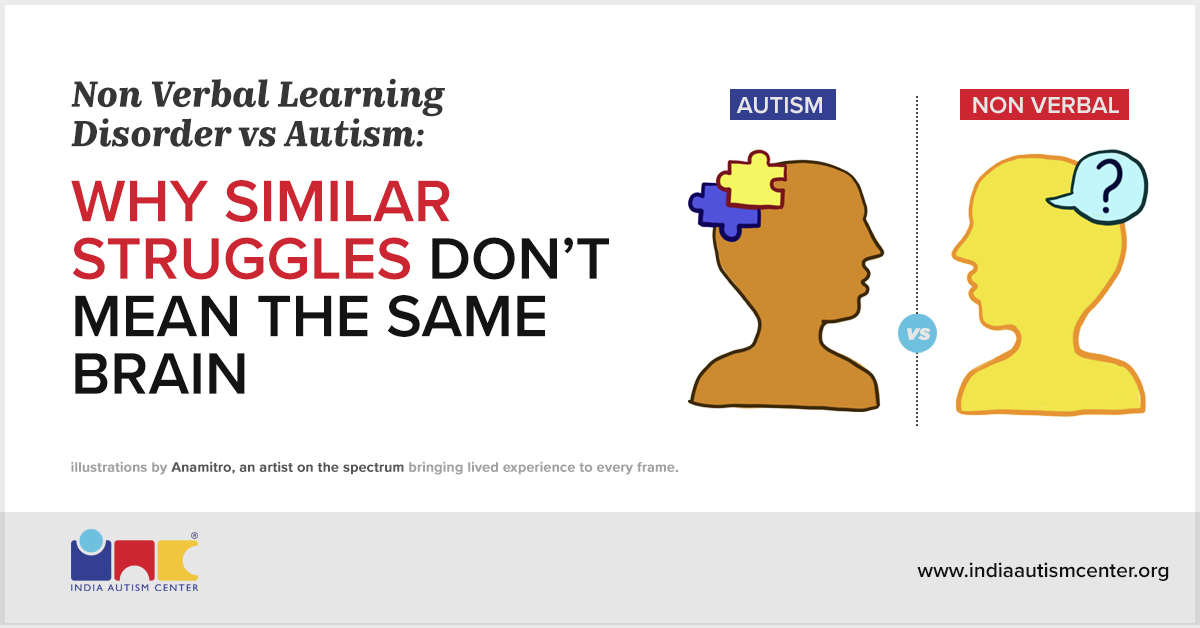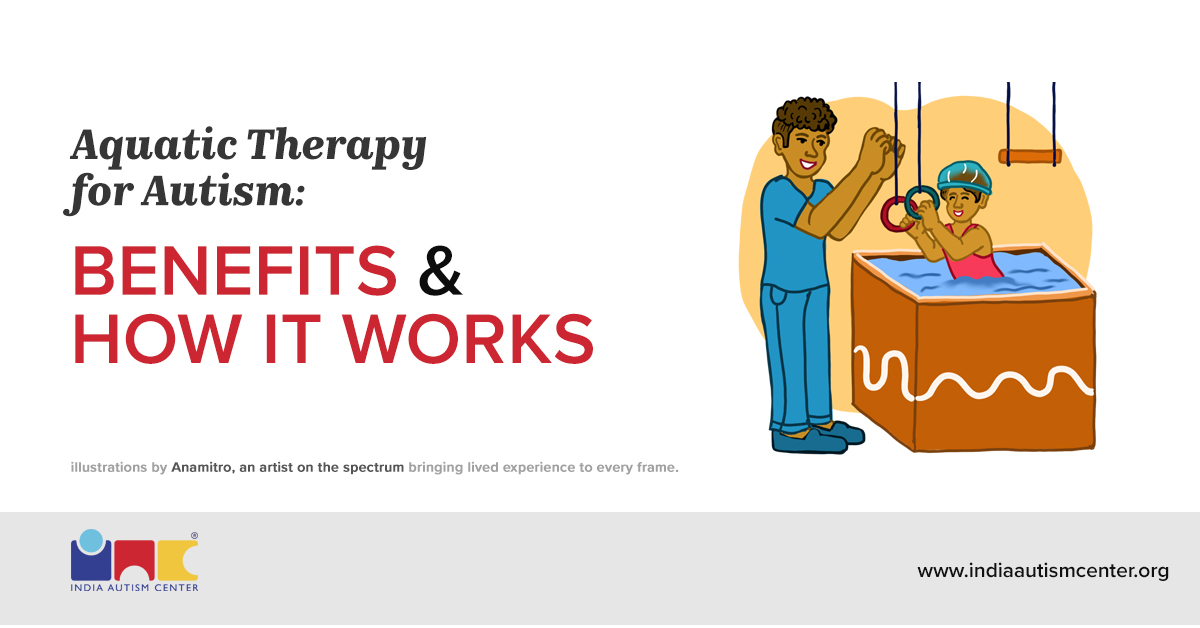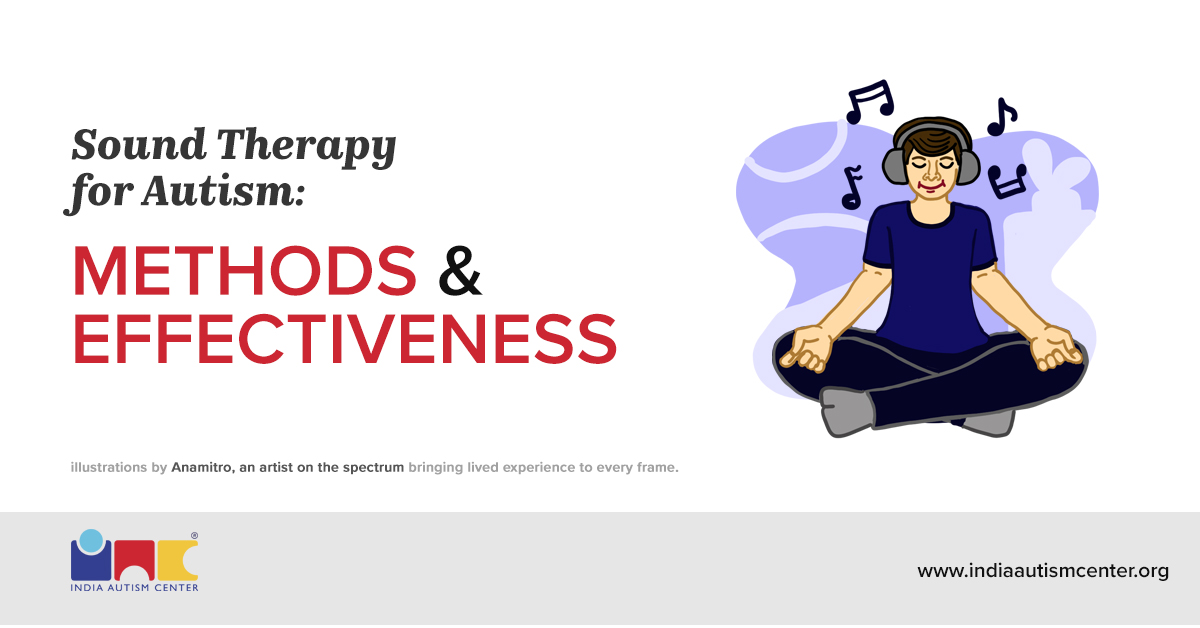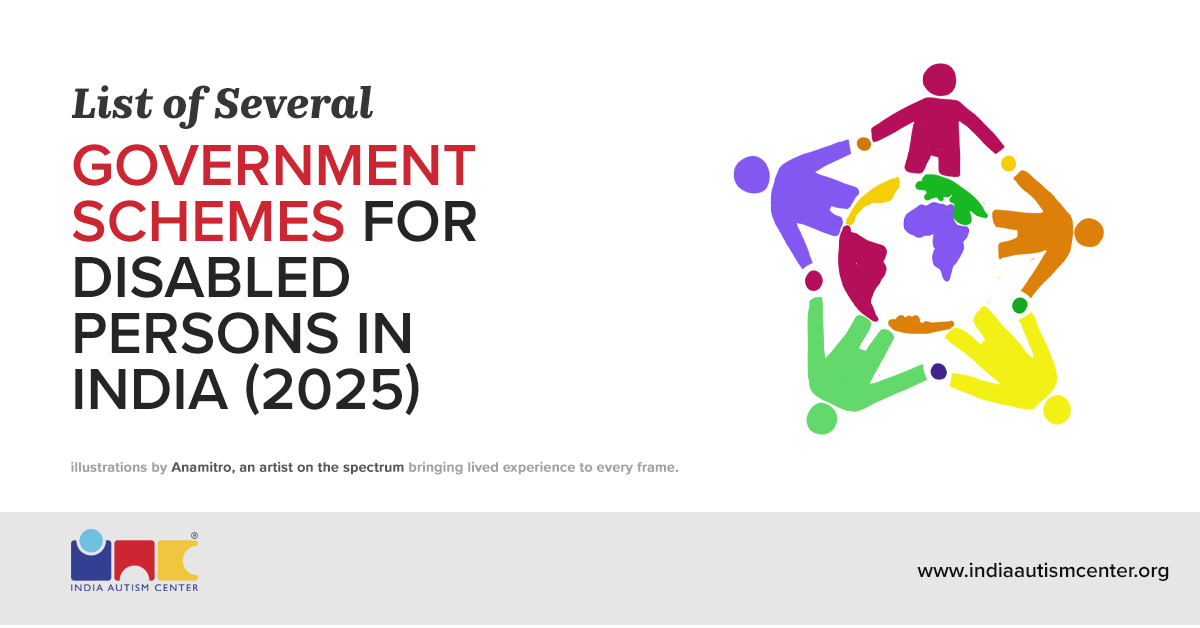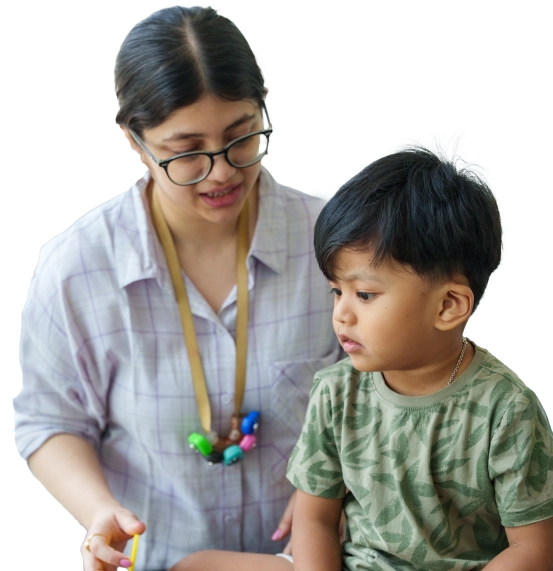At first glance, non-verbal learning disorder (NVLD) and autism spectrum disorder (ASD) can appear deceptively similar. Both may involve social difficulties, rigid thinking, and challenges in peer interactions.
But beneath the surface, they’re distinct.
NVLD and ASD differ in their origins, core symptoms, diagnostic frameworks, and even how they respond to intervention.
In this article, we’ll break down non-verbal learning disorder vs autism clearly and clinically.
But not only that, we’ll also explore why NVLD is often mistaken for autism, despite being a separate condition.
So, let’s dive in.
Non-Verbal Learning Disorder vs Autism Spectrum Disorder
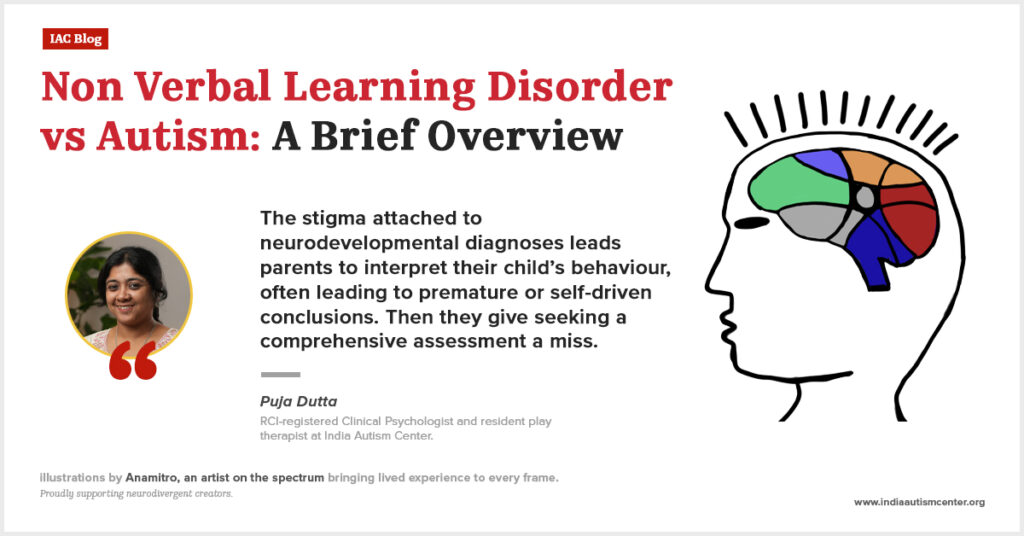
In classrooms, therapy sessions, or group settings, NVLD and ASD may present themselves in a strikingly similar manner. To move past this surface-level confusion, clinical insight is crucial.
As Puja Dutta, an RCI-registered psychologist with India Autism Center, explains,
![]()
Parents often misread social or spatial difficulties when comparing NVLD vs autism. Without a proper assessment, this can lead to misdiagnosis and missed intervention windows. A comprehensive evaluation by trained professionals is essential to ensure timely and appropriate support.
So what sets these two conditions apart? Let’s begin by defining NVLD.
What Is Non-Verbal Learning Disorder?
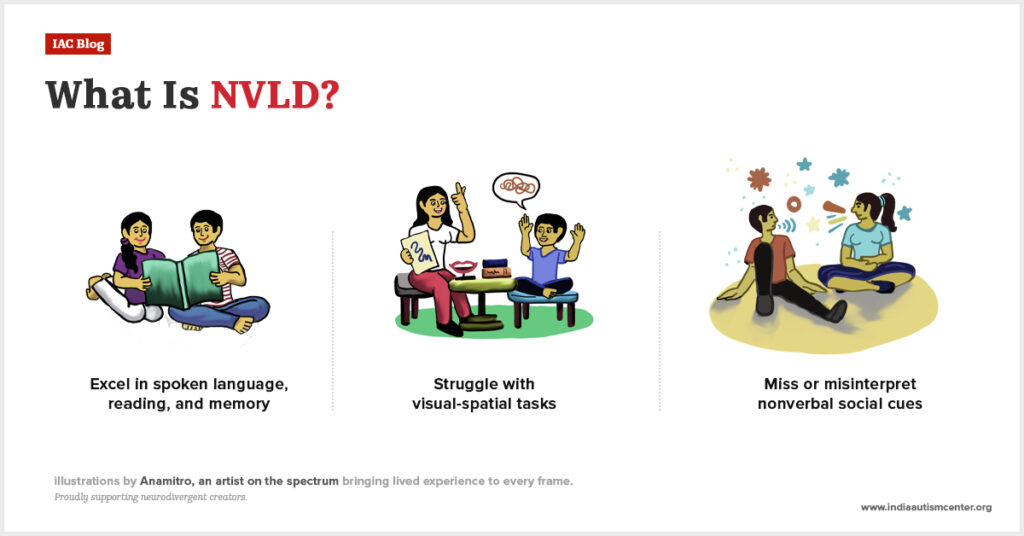
NVLD is a neurodevelopmental condition characterized by strengths in verbal expression but significant difficulties with spatial reasoning, motor coordination, and nonverbal social cues.
Children with NVLD often:
- Excel in spoken language, vocabulary, and factual recall
- Struggle with visual-spatial tasks such as reading maps, understanding diagrams, or copying shapes
- Misread or miss facial expressions, tone of voice, gestures, or sarcasm
- Experience difficulty with abstract thinking and adapting to novel situations
- Appear clumsy or uncoordinated due to proprioceptive challenges
The Paradox of NVLD
It is important to note that NVLD does not mean a child is nonverbal.
In fact, a child with NVLD may speak eloquently, yet miss social cues. Follow detailed instructions, but get lost navigating a building. Memorize facts, but struggle to interpret graphs or charts.
This paradox is part of why some parents ask: “Is NVLD on the autism spectrum?”
But, in reality, the answer lies in understanding how NVLD diverges from ASD at the diagnostic level.
Is NVLD Recognized as a Formal Diagnosis?
No, and that’s part of the problem.
NVLD is not currently listed in the Diagnostic and Statistical Manual of Mental Disorders, Fifth Edition (DSM-5), the manual used by clinicians for formal diagnosis. As a result, there is no standardized diagnostic pathway.
But that doesn’t mean NVLD is rare or insignificant.
A 2020 study estimated that NVLD may affect 3% to 4% of children and adolescents in the United States.
Due to insufficient recognition, NVLD is frequently misdiagnosed as ADHD, autism, or behavioral issues. This mislabeling results in interventions that may not effectively address the core challenges.
Now that we’ve explored NVLD, let’s clarify what distinguishes ASD.
What Is Autism Spectrum Disorder?
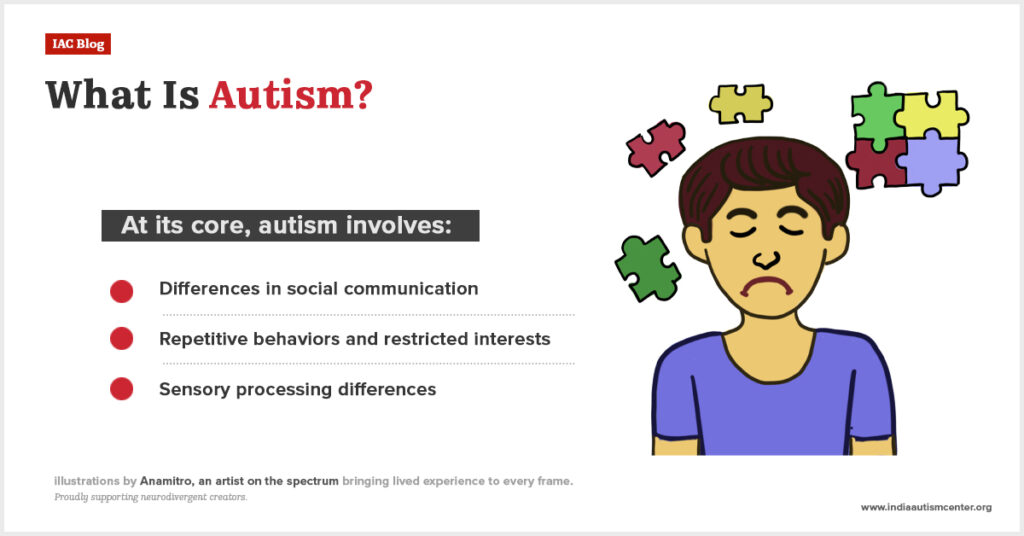
Autism spectrum disorder is a clinically recognized neurodevelopmental condition. It is typically diagnosed in early childhood, though autism signs may become evident at various developmental stages.
According to the Centers for Disease Control and Prevention (CDC), autism affects approximately 1 in 31 children in the United States.
Core features of ASD include:
- Differences in social communication (e.g., difficulty with back-and-forth conversation, interpreting facial expressions, gestures, tone, and social cues)
- Repetitive behaviors and restricted interests (e.g., stimming, insistence on sameness, obsessive interests, or ritualistic behaviors)
- Sensory processing differences (e.g., hypersensitivity or hyposensitivity to lights, sounds, textures, temperatures, and other stimuli)
Autism Is A Spectrum
Autism is a spectrum condition. This means that no two individuals with ASD will display the same behaviors. Some may require significant support in daily life, while others may live independently with minimal intervention.
Now that we’ve defined both conditions, let’s look at how NVLD and autism differ across their most commonly confused features. To better understand the nuances of nonverbal learning disorder vs autism, here’s a quick side-by-side comparison across key developmental traits.
NVLD vs Autism: Comparing Traits Head-to-Head
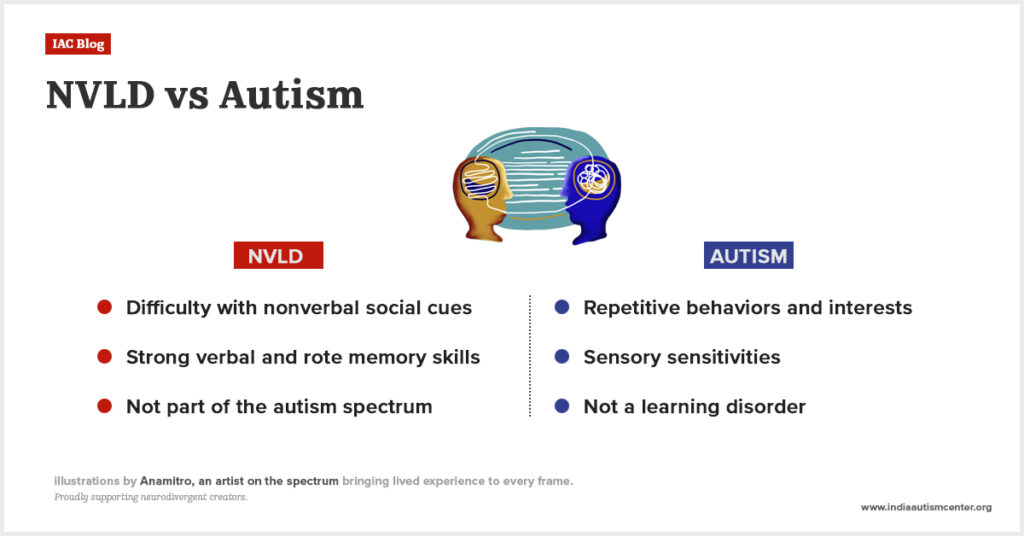
| Key Trait | Non Verbal Learning Disorder (NVLD) | Autism Spectrum Disorder (ASD) |
| Verbal Ability | Strong verbal skills; articulate speech and vocabulary | Ranges from nonverbal to highly verbal; challenges in social communication |
| Visual-Spatial Reasoning | Major difficulties (maps, puzzles, spatial tasks) | May vary; not a core diagnostic feature |
| Nonverbal Social Cues | Struggles with facial expressions, tone, and body language | Common; part of core diagnostic criteria |
| Repetitive Behaviors / Routines | Not typical, but may rely on routine for comfort | Hallmark symptom: stimming, insistence on sameness |
| Sensory Processing | May have proprioceptive challenges | Broad range: hypo- or hyper-sensitivity to sensory input |
| Motor Coordination | Clumsy movements, poor handwriting | May be present, but varies |
| DSM-5 Recognition | Not formally recognized | Yes, under Neurodevelopmental Disorders |
| Diagnostic Tools | No standardized tool; diagnosis via neuropsychological evaluation | Multiple validated tools: ADOS, ADI-R, M-CHAT, etc. |
| Co-occurrence | May co-occur with ASD or ADHD | May co-occur with intellectual disability, anxiety, ADHD, etc. |
| Root Challenge | Difficulty interpreting and responding to nonverbal information | Difficulty with social communication, behavior regulation, and sensory input |
Understanding the Overlap Between NVLD and Autism
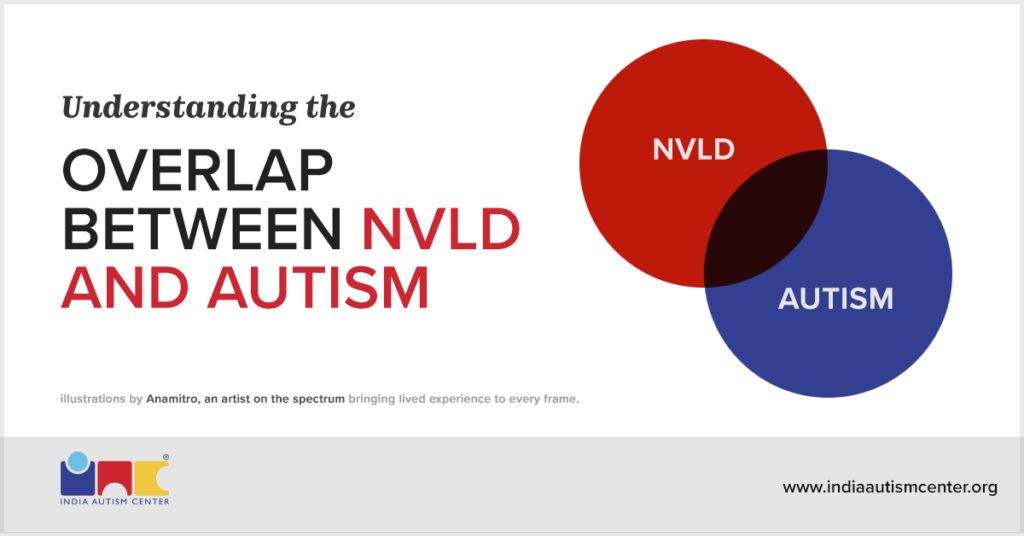
NVLD and autism often blur at the edges. They share traits, mimic each other’s patterns, and confuse even seasoned professionals. So how do you differentiate one from the other?
The answer lies in identifying the root causes behind the behaviors.
Here’s where these two conditions often mirror each other:
Trouble with Motor Skills
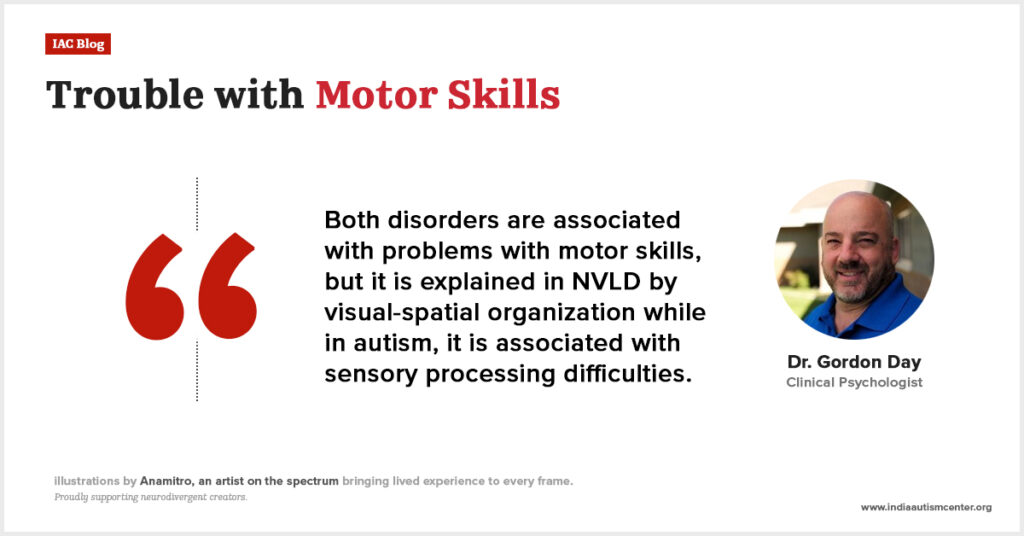
Children with NVLD and ASD may both appear clumsy. Struggling with handwriting, tripping often, or fumbling through physical activities.
But the underlying reasons diverge.
- In NVLD, motor challenges arise from difficulties in processing space and distance
- In autism, these issues often stem from sensory overload
![]()
Both disorders are associated with problems with motor skills, but it is explained in NVLD by visual-spatial organization, while in autism, it is associated with sensory processing difficulties.
Same behaviors, different mechanisms. And that distinction can inform very different therapeutic approaches.
Fluent Speakers, Missed Messages
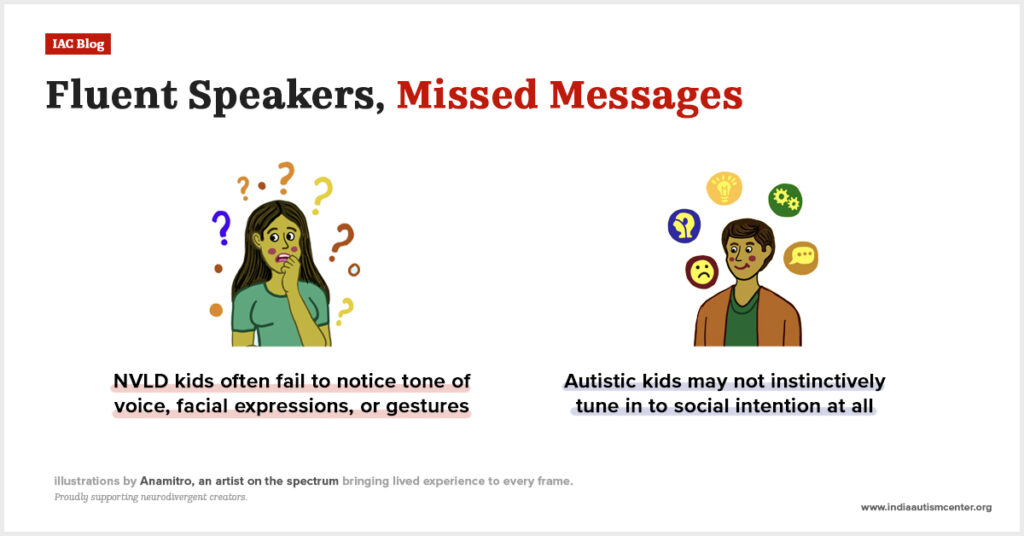
NVLD and autism can both show up in children who speak like little professors. Articulate, advanced, even funny.
But they often miss out on unspoken social signals.
- Children with NVLD may struggle to decode tone, body language, or facial expressions
- Those with autism may have difficulty understanding social intentions overall
Friendship That Doesn’t Quite Land

Both NVLD and autism can bring a dazzling ability to memorize facts.
But sometimes, the why behind those facts is missing.
- In autism, the brain zeroes in on details, often missing the big picture
- In NVLD, challenges in integrating concepts across time and space are common
Resistance to Change
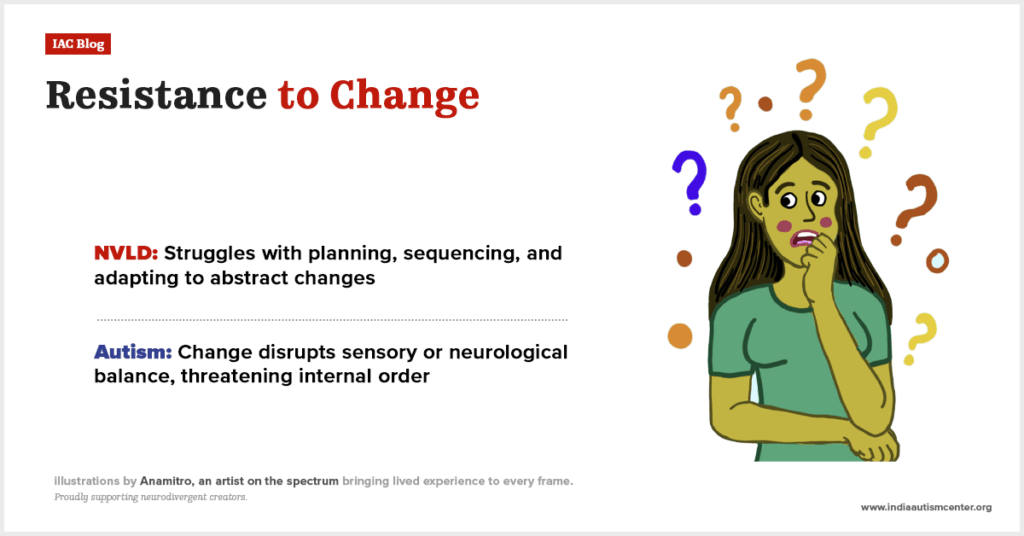
A last-minute change in seating, an unexpected substitute, or even a fire drill can spark intense emotional reactions.
- For individuals with NVLD, the difficulty lies in planning, sequencing, and adjusting to abstract changes
- For individuals with autism, the underlying issue is often sensory or neurological, which means that change can threaten their delicate sense of internal order
Facts Without Framework
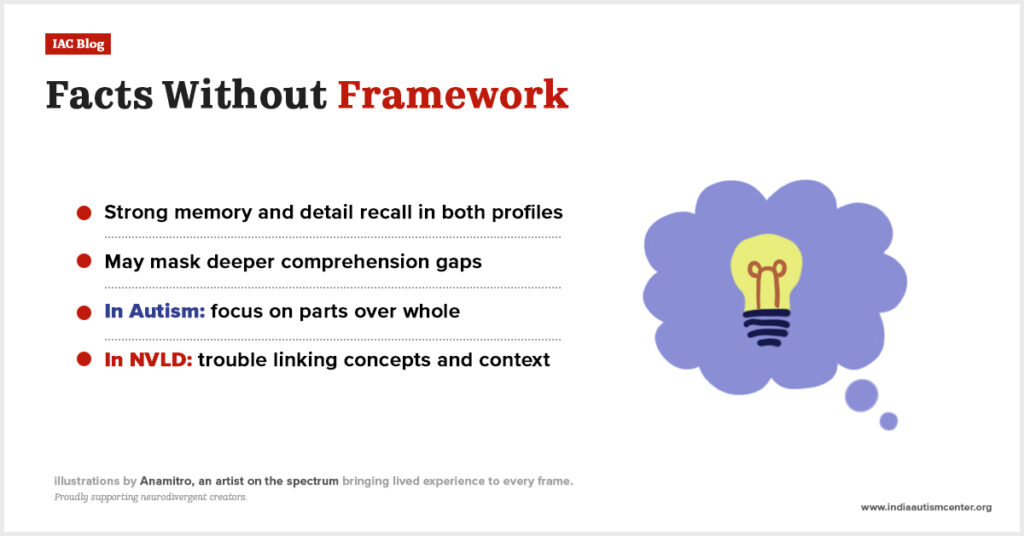
Both NVLD and autism can bring a dazzling ability to memorize facts.
But sometimes, the why behind those facts is missing.
- In NVLD, challenges arise in integrating concepts across time and space
- In autism, the brain zeroes in on details and often misses the big picture, signifying a weak central coherence
Meltdowns: Not Defiance, But Overload
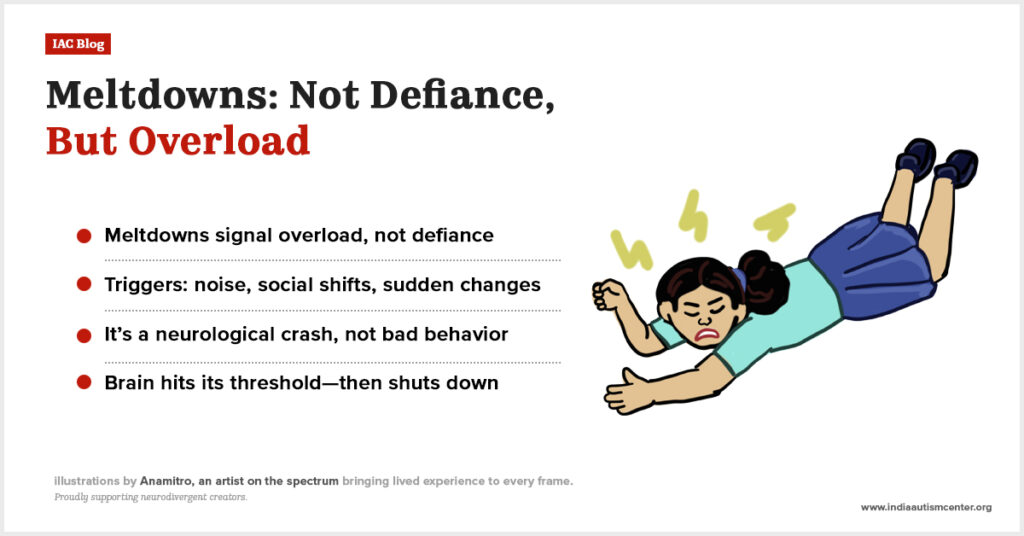
A sudden change in the classroom, confusing instructions, or a noisy hallway might seem minor to neurotypical individuals.
But for children with NVLD or autism, such triggers can push the brain past its threshold.
What follows is yelling, crying, and freezing. This isn’t rebellion. It’s a neurological crash.
So, it’s important to note that discipline may provide structure, but what they really need is preparation, sensory regulation, and emotional scaffolding.
High Verbal Ability, Low Functional Support
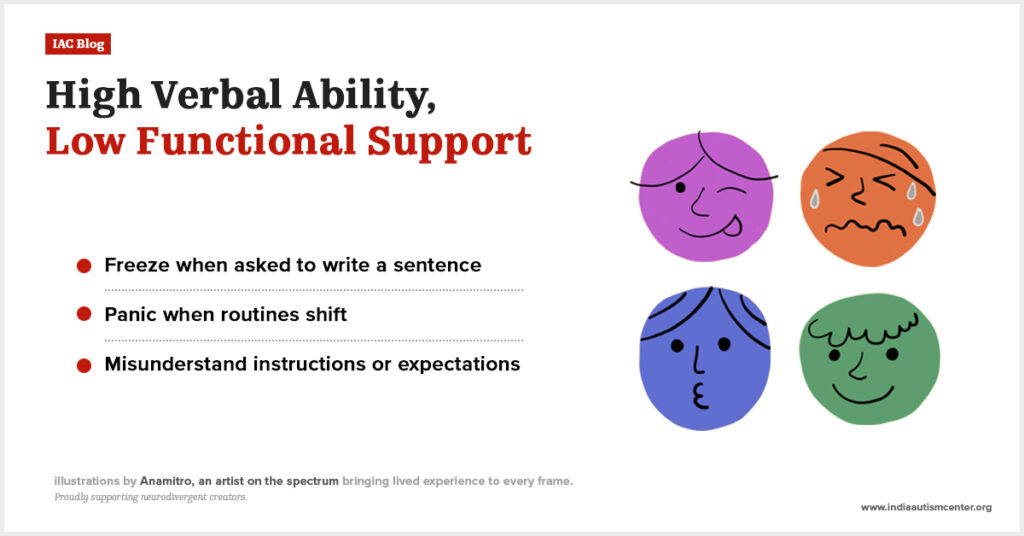
A child with NVLD or autism may sound brilliant. They may use advanced vocabulary, state obscure facts, or express mature opinions.
But they may still:
- Freeze when given a writing task
- Panic at a routine change
- Misinterpret everyday instructions
This gap between expressive language and executive function can lead adults to overestimate what the child can handle. And this only leads to frustration, misplaced discipline, or burnout.
Parting Words: Find Support That Matches the Pattern
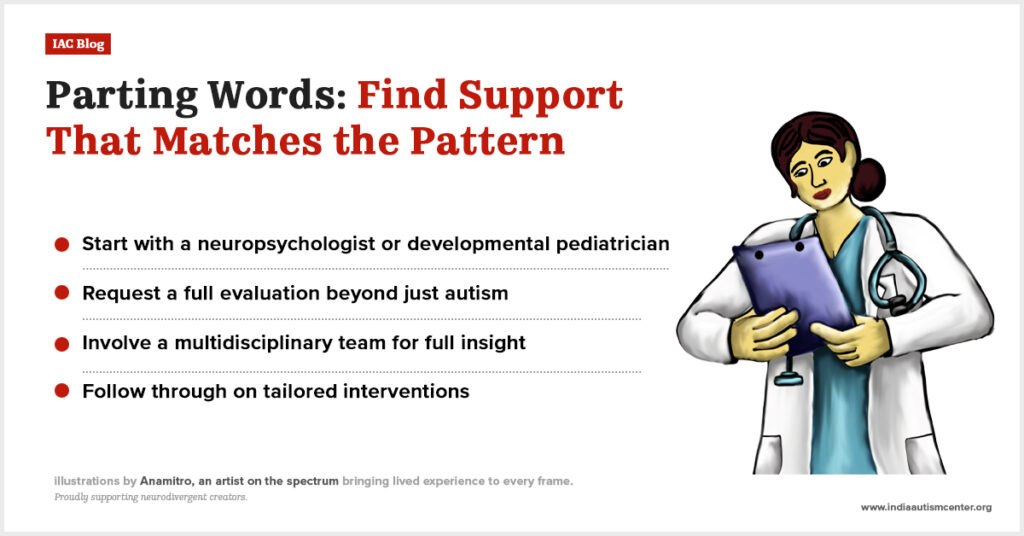
If the traits described here align with what you’re noticing in your child, it’s worth slowing down and taking a closer look.
Because what if these patterns don’t correct themselves with time, discipline, or simply trying harder?
What makes a real difference is targeted support, grounded in an accurate understanding of your child’s brain.
That starts with a strategic, well-informed approach, which includes the following steps:
- Consult a qualified specialist who can look beyond surface behavior
- Ask for a comprehensive evaluation that assesses not just for autism, but also learning, motor, and processing differences
- Build a multidisciplinary team, including speech-language therapists, occupational therapists, and clinical psychologists, to map out your child’s needs with precision
- Follow through on individualized interventions to understand whether the diagnosis falls under autism, NVLD, or elements of both.
Also, engage proactively with your child’s school. Sharing diagnostic insights can open doors to critical accommodations such as structured routines, additional processing time, or visual supports that reduce daily friction.
At India Autism Center, we specialize in creating clarity where there’s diagnostic fog. So, if you’re struggling to distinguish between nonverbal learning disorder vs autism, feel free to contact us.
Frequently Asked Questions
Is NVLD a form of autism?
No, non-verbal learning disorder is not a form of autism. While both involve challenges with social cues and learning, NVLD is primarily about visual-spatial processing and is not on the autism spectrum.
Is NVLD autism?
No. NVLD and autism are separate conditions. NVLD affects how people understand nonverbal information, while autism involves broader differences in social communication, sensory response, and repetitive behaviors.
Is nonverbal learning disorder on the autism spectrum?
No. NVLD is not classified as being on the autism spectrum. However, the two can look similar in social and academic settings, which often leads to misdiagnosis.
Is non-verbal learning disorder on the autism spectrum?
No. Non-verbal Learning Disorder is not officially recognized as part of the autism spectrum, although it shares some overlapping traits.
Is NVLD related to autism?
They’re related in presentation but not the same condition. Both can affect social behavior and learning, but autism typically impacts a wider range of developmental areas, including sensory processing.
What causes NVLD?
While research is ongoing, NVLD is believed to stem from right-hemisphere brain dysfunction, affecting visual-spatial, organizational, and abstract reasoning skills.
What causes autism?
A mix of genetic and environmental factors causes autism. It affects brain development, leading to differences in communication, behavior, and sensory experience.
What’s the difference between non-verbal learning disorder and autism?
Autism affects social skills, communication, and sensory processing. NVLD mainly impacts visual-spatial reasoning, understanding body language, and abstract thinking, while verbal skills are often strong.
Can autism be mistaken for a learning disability?
Yes. Autism is a neurodevelopmental condition, not a learning disability, but it can be mistaken for one due to overlapping academic challenges. A full evaluation helps clarify the difference.
Can people with NVLD speak?
Yes. Speaking is usually a strength for people with NVLD. They often have strong vocabularies and communicate well with words, but struggle with social cues and spatial reasoning.
Do kids with NVLD speak?
Yes. Kids with NVLD typically speak fluently and often sound advanced for their age. Their challenges show up more in nonverbal and abstract reasoning tasks.
Is non-verbal related to autism?
It can be, but not always. Nonverbal communication challenges are common in autism, but other conditions like apraxia, trauma, or hearing loss can also cause someone to be nonverbal.
Can a child be nonverbal but not autistic?
Yes. Non-verbal behavior can stem from various causes, like speech delays, apraxia, selective mutism, or neurological conditions, without involving autism.
What’s the difference between being nonverbal and being autistic?
Being nonverbal means not using spoken language. Being autistic means having a different neurotype that affects social, sensory, and communication patterns. Not all autistic people are nonverbal.
Do nonverbal autistic children have intelligence?
Yes. Many nonverbal autistic children have average or above-average intelligence. They may think and learn differently, and communicate better through nonverbal tools like AAC.
Can you go nonverbal without autism?
Yes. People can temporarily or permanently lose speech due to stress, trauma, selective mutism, or other neurological factors unrelated to autism.
Do nonverbal kids eventually talk?
Some do, some don’t. With early intervention and the right supports, many children develop speech over time. Others may rely on alternative forms of communication long-term.
How to teach a child with NVLD?
Use structured, step-by-step instructions. Support verbal strengths, but provide visual aids, social skills coaching, and help with organizing space, time, and tasks.
How does NVLD affect adults?
Adults with NVLD may struggle with organization, abstract reasoning, or reading social cues. Many manage well with coping strategies, career support, and continued social learning.

